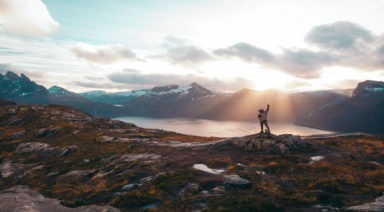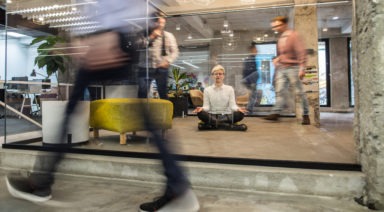Subjects Able to Intentionally Heal in Lucid Dream, Study Finds

The findings of a groundbreaking new study on lucid dreaming are in and suggest that those trained in the practice not only see a dramatic improvement in their PTSD symptoms but may also experience change on a biological level.
Research into lucid dreams, in which one wakes up inside a dream, has produced a fascinating insight into the neurological features of this state. Most of the investigation thus far has been focused on mapping brain activity, which has shown the unique characteristics of the brain function of lucid dreamers.
Previously we reported on the preliminary findings of a study out of the Institute of Noetic Sciences, or IONS, the first of its kind to look at the potential for healing within a lucid dream, both on a psychological and physiological level.
Dr. Garret Yount is a molecular neurobiologist who led the study and updated us on the final findings of this extraordinary investigation.
“So in this study, we partnered with an awesome lucid dreaming teacher, Charlie Morley, and we had heard from him that his workshops with veterans with PTSD were really helpful in terms of reducing the symptoms of PTSD,” Yount said. “So, we partnered with him to basically bring a scientific lens to that, and the idea was to recruit folks with chronic PTSD, we included both veterans and non-veterans. They attended a one-week workshop from their home, and Charlie taught them how to achieve lucidity with the goal of transforming their trauma during the dreams. Then we, the research team, just tried to collect data along the way without interfering too much with the process.”
The participants were taught a variety of induction techniques and most had at least one lucid dream within the week. The initial results of the study were remarkable.
“The big finding was that PTSD symptoms decreased dramatically during the workshop, and amazingly it stayed that way all the way when we looked a month later. The testimonials from the people in the study were just so inspiring — they talked about for 10 years trying all kinds of therapy, and then in one week, boom, their life was changed, they were free of their nightmares. It was pretty incredible,” Yount said.
Researchers recently analyzed the data from a particularly unique component of the study.
“One of the really cool aspects of the study was we did an exploratory assessment of a biomarker,” Yount said. “So, we looked at an enzyme called amylase and we looked at levels of this — you can measure it in the saliva. We chose amylase because it’s been shown to be a marker of stress. For folks with PTSD, it acts differently, so it’s indicative of chronic sympathetic nervous system activation. So, we were looking at levels of amylase to see if it might show there was a general decrease in levels of stress after a healing lucid dreaming, and that’s exactly what we found. So, this means that their general stress levels went down. This was amazing, it was the first evidence ever of a physiological biomarker changing in relation to a healing lucid dream.
What can be the mechanism behind this phenomenon?
“So, my best guess about how it works is that this is a way to tap into the power of the unconscious mind in a way where you can really direct and manifest healing. This is oftentimes inhibited by our thinking brain, our thinking mind, and I think the sweet spot of this lucid dreaming is where you can kind of have a pact between the conscious mind and the subconscious mind to really bring about healing and just let it happen,” Yount said.
IONS is now planning a larger follow-up study. Should these results be replicated, the implications would be major.
“So, it’s exciting to see this physiological biomarker changing in association with the reduced PTSD symptoms, and it makes sense because of the relationship between the sympathetic nervous system,” Yount said. “It’s very exciting and has huge implications for the treatment of PTSD and other mental illnesses that are difficult to treat. But the fact that we found, for the first time, evidence of this physiological biomarker changing in relation to the healing lucid dream — has implications for illnesses that are more physically manifested. If you can change the level of an enzyme in your body through a healing lucid dream, that means you can change physical illnesses. So, I think this is tremendous and we have the opportunity to learn a lot about the healing power of the mind.”
IONS is currently recruiting participants for the follow-up study. Information is available at noetic.org
Napping Technique Allows You to Tap Into Creative Thought

A fascinating new study examines the mysterious twilight state between wakefulness and sleep and finds that it can be harnessed for creativity and problem-solving.
Thomas Edison, Albert Einstein, and Salvador Dali, among others, were all said to have used a curious napping technique to spark their creativity and inspired discoveries. Holding an object in their hands while napping, they would wake as the object fell and recall the thoughts they were having at that moment.
Inspired by these visionaries, researcher Delphine Oudiette and her colleagues at the Paris Brain Institute conducted a study to scientifically investigate this phenomenon. The researchers presented participants with mathematical problems that had a hidden rule which would allow them to be solved almost instantly.
They were then given a 20-minute break during which they were instructed to relax in a reclined position while holding a bottle. If the bottle fell, they were asked to report what they had been thinking right before they let go.
Throughout this break, subjects’ physiological activity was recorded to assess their state of wakefulness. Then, after the break, the participants were again presented with the math problems.




































